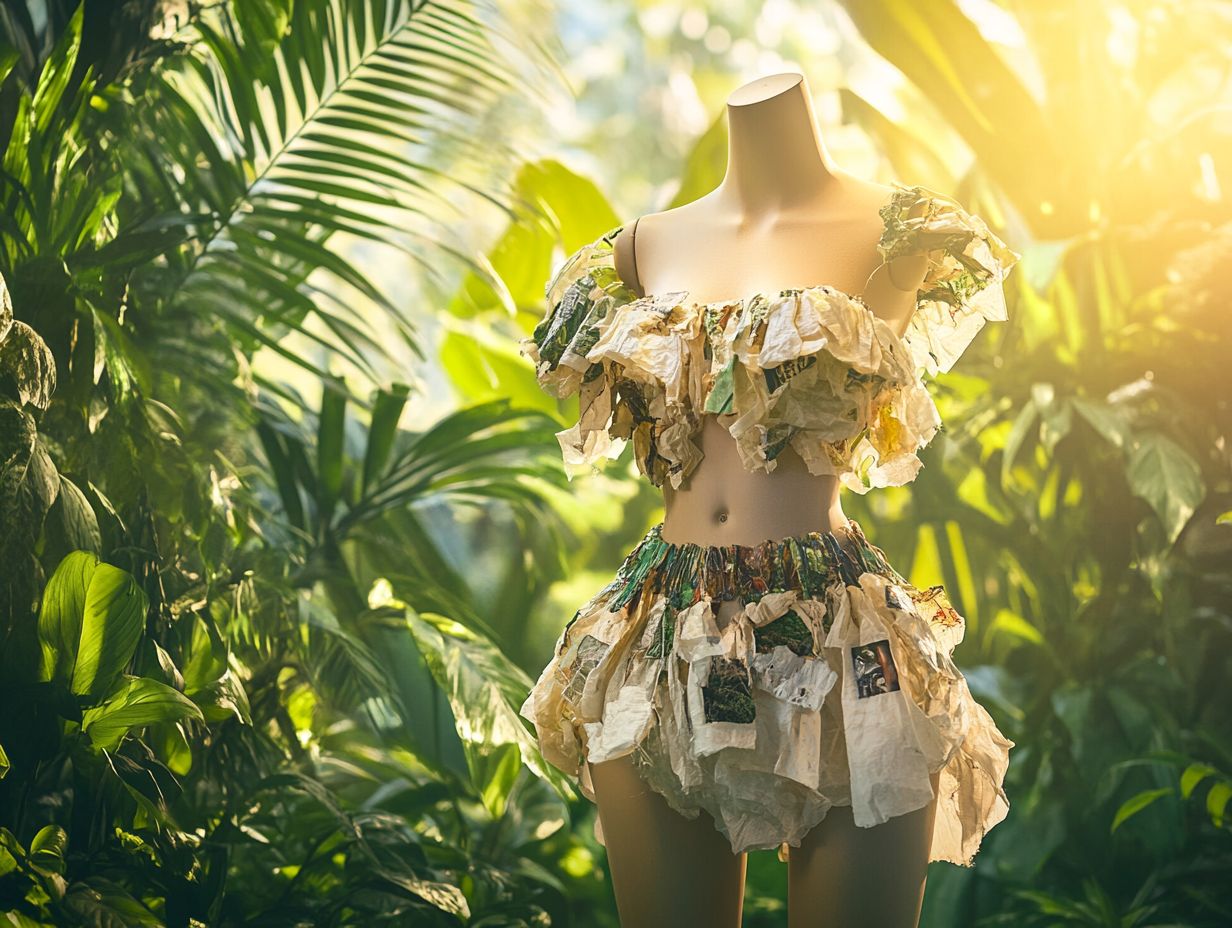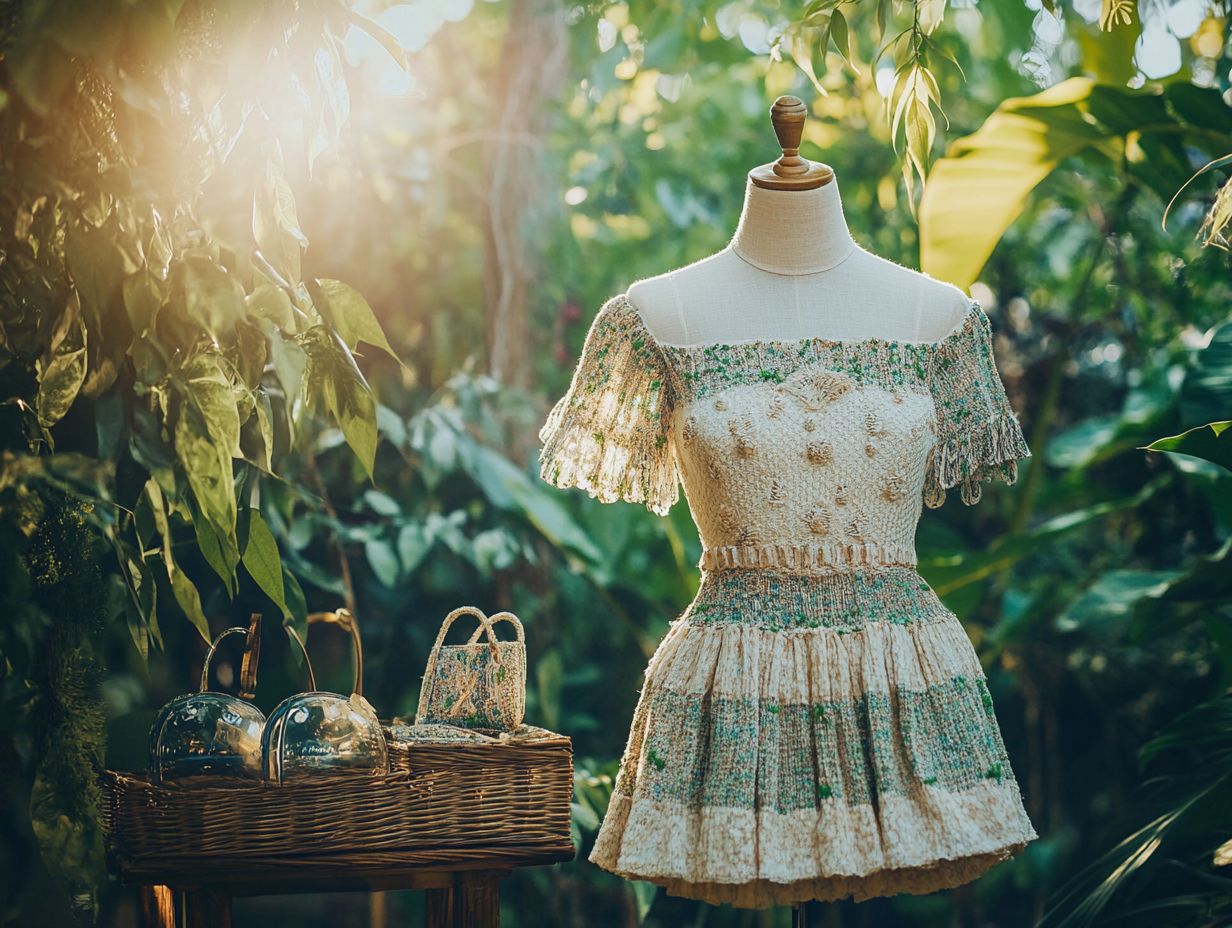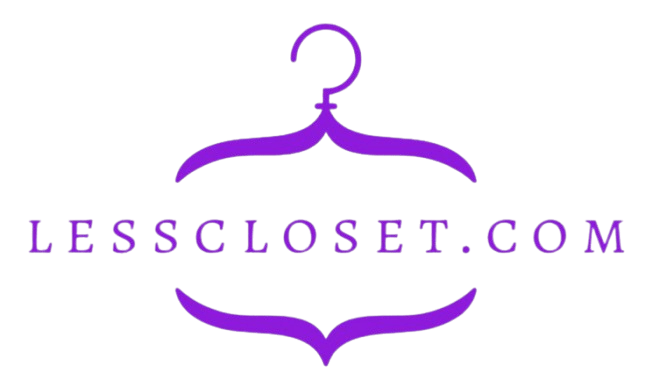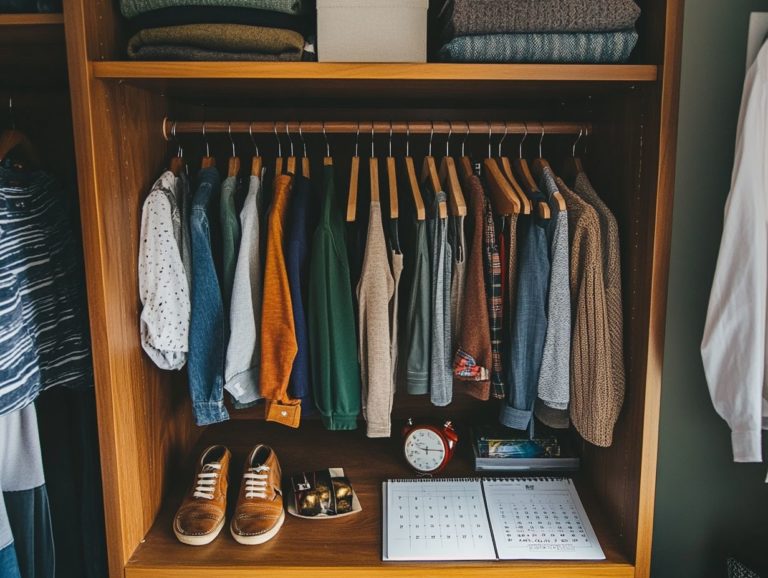What are the Benefits of Sustainable Fashion?
Sustainable fashion transcends mere trendiness; it embodies a transformative movement that places paramount importance on the planet, people, and profit.
As you become more aware of your purchasing power, the myriad benefits of sustainable fashion resonate throughout the industry. By reducing carbon footprints, preserving precious resources, improving working conditions, and bolstering local economies, the positive effects extend far beyond the surface.
This article delves into the advantages of sustainable fashion while providing you with practical tips to seamlessly integrate these principles into your wardrobe. Explore how your choices can play a pivotal role in fostering a more ethical and eco-friendly fashion landscape.
Contents
- Key Takeaways:
- Environmental Benefits of Sustainable Fashion
- Social Benefits of Sustainable Fashion
- Economic Benefits of Sustainable Fashion
- How to Incorporate Sustainable Fashion into Your Life
- Frequently Asked Questions
- What are the Benefits of Sustainable Fashion?
- How does sustainable fashion benefit the environment?
- What are the economic benefits of sustainable fashion?
- Does sustainable fashion have any social benefits?
- Can sustainable fashion benefit our health?
- How does sustainable fashion benefit future generations?
Key Takeaways:

- Choose sustainable fashion to reduce your carbon footprint and support fair trade.
- Supporting sustainable fashion promotes fair working conditions and fair trade practices.
- Choosing sustainable fashion benefits the economy by supporting local businesses and reducing waste.
Defining Sustainable Fashion
Sustainable fashion represents a powerful movement aimed at redefining the fashion industry by championing eco-friendly clothing and ethical practices that prioritize environmental responsibility and social justice.
This approach embraces sustainable garments made from organic cotton, natural dyes, and recycled materials. This helps reduce the environmental footprint associated with traditional fast fashion.
It advocates for transparent supply chains and fair wages for garment workers, ensuring that both people and the planet receive the respect they deserve throughout the clothing lifecycle.
The principles at the heart of this movement extend to responsible sourcing, where materials are carefully harvested to minimize ecological damage.
Circular fashion promotes a system where clothes are designed to last longer and can be reused or recycled, thereby minimizing waste.
Brands like Patagonia and Eileen Fisher exemplify these values, crafting quality products while actively supporting recycling initiatives.
By choosing eco-friendly options now, you can help reshape the fashion industry! This growing demand for sustainable brands shows the significant impact your purchasing decisions can have in fostering a healthier planet.
Environmental Benefits of Sustainable Fashion
The environmental benefits of sustainable fashion are truly remarkable as they tackle pressing challenges like industrial pollution and waste reduction.
By embracing sustainable practices, you can contribute to the creation of a carbon-neutral fashion industry.
Focusing on biodegradable materials and eco-friendly clothing options, this movement seeks to dramatically reduce the environmental footprint of conventional fashion while championing environmental protection.
Your choices in fashion can play a pivotal role in fostering a healthier planet.
Reducing Carbon Footprint
Reducing your carbon footprint is a pivotal aspect of sustainable fashion. Many brands embrace carbon-neutral practices that minimize their environmental impact throughout the clothing lifecycle.
You ll find that many of these brands increasingly rely on renewable energy sources, like solar and wind power, to fuel their operations, effectively cutting down on greenhouse gas emissions.
By sourcing materials locally, they not only support nearby economies but also significantly reduce transportation emissions that contribute to climate change.
Adopting eco-friendly production methods, such as using organic or recycled materials, is crucial in lessening the environmental burden typically associated with clothing manufacturing.
It s essential for you to be aware of these strategies because your choices like supporting these forward-thinking brands can collectively drive a shift in industry standards and help reduce the fashion sector’s carbon footprint over time.
Preserving Natural Resources
Preserving natural resources is essential to your commitment to the sustainable fashion movement, which champions the responsible sourcing of materials like organic cotton and recycled fibers for creating truly sustainable garments.
By focusing on these eco-friendly materials, you re not only reducing reliance on virgin resources but also playing a vital role in minimizing waste and pollution. Embracing the idea of designing clothes that can be recycled after use significantly cuts down on the energy and water typically used in production processes. This approach creates a responsible production cycle. Brands reduce their carbon footprint and encourage environmental stewardship among consumers like you.
Ultimately, such practices lay the groundwork for a more regenerative fashion ecosystem that prioritizes the health of our planet and its precious resources.
Social Benefits of Sustainable Fashion

Sustainable fashion transcends mere environmental concerns; it embraces profound social benefits, emphasizing social justice and the well-being of garment workers through fair production methods and fair wages.
The sustainable movement prioritizes these elements to create a fairer fashion industry, ensuring that workers are treated with the fairness and respect they deserve.
Improving Working Conditions
Improving working conditions in the fashion industry is a priority for sustainable brands that emphasize ethical production methods and social responsibility.
To make this happen, many brands have launched specific initiatives focused on creating safer environments, ensuring fair wages, and strengthening employee rights. Take, for instance, companies like Patagonia and Everlane; they ve made remarkable progress by establishing transparent supply chains and guaranteeing that their workers earn compensation that meets, if not exceeds, local living wage standards.
These brands often invest in training programs for their employees, equipping them with the knowledge to understand their rights and advocate for better working conditions. By collaborating with organizations like the Ethical Trading Initiative, they are setting a high standard for responsible sourcing practices, serving as a model that others in the industry can strive to follow.
Promoting Fair Trade
Promoting fair trade is a vital aspect of sustainable fashion that ensures workers are treated equitably while championing social justice through ethical practices throughout the supply chain. This approach is vital for ensuring fair wages and safe working conditions. It empowers workers to thrive in their communities!
Certifications from organizations like the Fairtrade Foundation are crucial in advancing these principles, offering a reliable framework that guarantees social and environmental standards are upheld.
With these certifications, you can make informed choices, confident that your purchases positively impact the lives of those involved in garment production.
Ultimately, embracing fair trade practices fosters community development and spurs sustainable economic growth, creating ripple effects that enrich families and local economies for generations to come.
Economic Benefits of Sustainable Fashion
The economic advantages of sustainable fashion are complex and far-reaching. By embracing this approach, you not only support local economies but also champion the creation of durable apparel.
This reduces waste while fostering sustainable practices throughout the fashion industry.
Join the movement for sustainable fashion and make a difference today!
Supporting Local Economies
Supporting local economies is one of the standout advantages of sustainable fashion. When you choose to engage with sustainable brands, you re often backing ethical production practices that benefit communities and stimulate economic growth.
By prioritizing local resources, these brands create job opportunities that empower artisans and workers right in their neighborhoods. This ensures fair wages and favorable working conditions. Take brands like Patagonia and Eileen Fisher, for instance they don t just employ local artisans; they also invest in community initiatives that promote environmental stewardship.
These businesses often work with local organizations to tackle social issues and support local skills, ultimately strengthening local economies. Your commitment to sustainable fashion not only enhances the livelihoods of those directly involved; it also fosters a sense of pride and responsibility among community members, showcasing the broader social benefits of this enlightened approach.
Reducing Waste and Costs

Reducing waste and costs is at the heart of sustainable fashion, where every decision prioritizes the creation of long-lasting apparel and effective waste management strategies, including innovative zero waste initiatives. Zero waste initiatives aim to eliminate waste by rethinking the design process.
By embracing upcycling, which means turning old items into something new, and recycling, you ll find that these brands minimize their environmental footprint while transforming discarded textiles into stunning, innovative designs. When you choose high-quality fabrics, you ensure that each piece is durable and timeless, standing in stark contrast to the fast fashion industry’s throwaway mentality.
This approach fosters a more eco-friendly narrative while promoting financial wisdom for you as a consumer. Investing in well-crafted clothing means fewer replacements down the line, ultimately saving you money. Thus, sustainable fashion brands advocate for an enduring style that resonates with eco-conscious shoppers, paving the way for why sustainable fashion matters for future generations, creating a more sustainable and economically sound future.
How to Incorporate Sustainable Fashion into Your Life
Incorporating sustainable fashion into your life starts with making informed decisions as an eco-conscious consumer. This means focusing on conscious purchasing and embracing sustainable choices that prioritize ethical clothing and waste reduction.
By doing so, you set the stage for a wardrobe that reflects your values and contributes positively to the planet.
Tips for Shopping and Styling Sustainably
Shopping and styling sustainably means being intentional about your choices, prioritizing ethical clothing options, and curating a wardrobe that reflects sustainable practices.
Don’t miss out on the chance to elevate your wardrobe sustainably! To truly enhance this eco-conscious journey, seek out brands that prioritize sustainability in their production processes and materials. Supporting local artisans not only helps reduce carbon footprints but also bolsters community economies.
By incorporating second-hand and upcycled fashion pieces into your wardrobe, you contribute to minimizing waste and promoting a circular economy. A circular economy means we keep products in use as long as possible.
Focusing on developing a personal style that mirrors your values allows you to create a unique look that resonates with your beliefs, ultimately guiding you toward more thoughtful and intentional choices in your daily life.
Frequently Asked Questions
What are the Benefits of Sustainable Fashion?
Sustainable fashion has numerous benefits, some of which include:
How does sustainable fashion benefit the environment?

Sustainable fashion uses eco-friendly materials and production methods, reducing the negative impact on the environment.
What are the economic benefits of sustainable fashion?
Sustainable fashion supports fair trade and ethical labor practices, creating better working conditions and fair wages for workers.
Yes, sustainable fashion promotes diversity and inclusivity, as well as supporting local communities and cultures.
How can you support local artisans in your area?
Can sustainable fashion benefit our health?
Imagine wearing clothes that not only look good but are also safe for your health! By choosing sustainable fashion, you can help reduce harmful chemicals in your wardrobe.
How does sustainable fashion benefit future generations?
Think about the world you want to leave behind! By embracing sustainable fashion, we can all work together to ensure future generations inherit a thriving planet.




